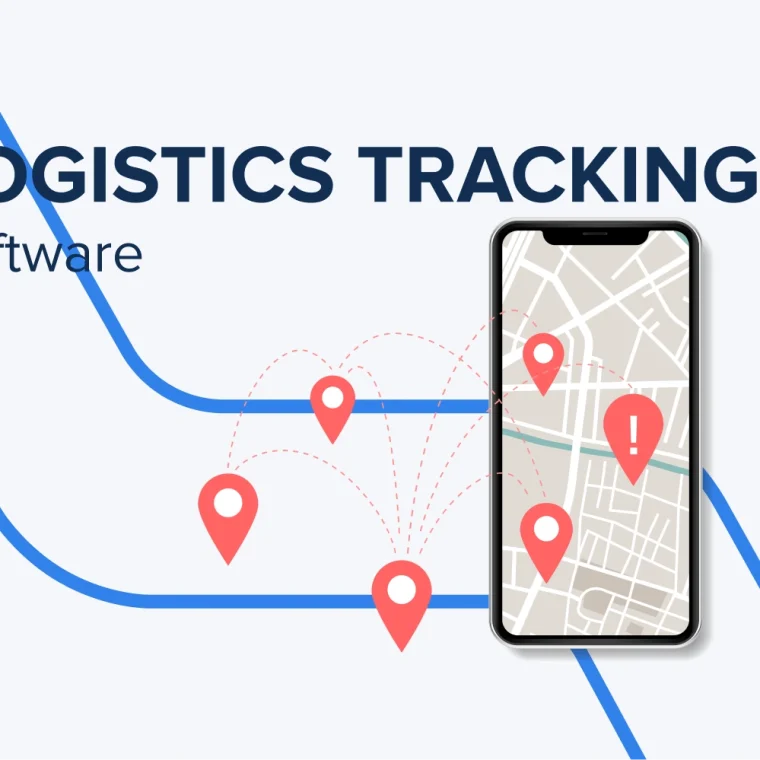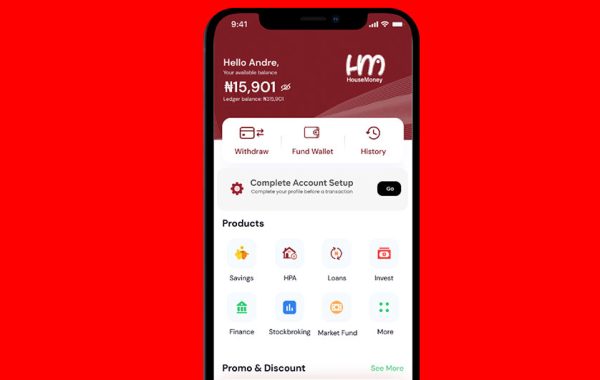In today’s fast-paced world, efficient supply chain management is more crucial than ever. Companies strive to streamline their operations, minimize costs, and enhance customer satisfaction. And in this pursuit, a revolutionary solution has emerged: Red Star Tracking. With its cutting-edge technology and advanced analytics, Red Star Tracking is transforming the way businesses manage their supply chains. By providing real-time visibility and seamless integration across the entire supply chain, this innovative system empowers organizations to make informed decisions, optimize processes, and enhance overall efficiency. In this article, we delve into the secrets behind Red Star Tracking, uncovering how it is reshaping the landscape of supply chain management. Prepare to be amazed as we explore the key features, benefits, and success stories behind this game-changing solution. Whether you’re an industry expert or simply curious about the latest advancements in logistics, this article will unveil the untold secrets of Red Star Tracking and show you why it’s poised to revolutionize supply chain management as we know it.
The traditional challenges in supply chain management
Supply chain management has always been a complex and challenging task for businesses. The traditional approach often involves manual processes, paperwork, and disjointed systems, leading to inefficiencies, delays, and increased costs. Lack of visibility and coordination across the supply chain can result in inventory shortages, stockouts, and missed delivery deadlines. These challenges not only impact the bottom line but also affect customer satisfaction and brand reputation.
How Red Star Tracking works and its key features
Red Star Tracking leverages cutting-edge technology to provide real-time visibility and seamless integration across the entire supply chain. The system utilizes a combination of GPS, RFID, and IoT (Internet of Things) sensors to track and monitor the movement of goods at every stage of the supply chain. With its advanced analytics capabilities, Red Star Tracking collects and analyzes vast amounts of data, providing valuable insights into the performance of the supply chain.
One of the key features of Red Star Tracking is its ability to provide accurate and up-to-date information on the location, condition, and status of goods in transit. This real-time visibility enables businesses to proactively identify and address any issues that may arise, such as delays, damages, or quality control problems. By having access to this information, companies can make informed decisions, optimize routes, allocate resources effectively, and ensure timely delivery of goods.
Another notable feature of Red Star Tracking is its seamless integration with existing supply chain management systems. The system can be easily integrated with ERP (Enterprise Resource Planning) software, warehouse management systems, and transportation management systems, among others. This integration allows for the exchange of data in real-time, eliminating the need for manual data entry and reducing the risk of errors or miscommunication.
Benefits of using Red Star Tracking in supply chain management
The implementation of Red Star Tracking in supply chain management offers a wide range of benefits for businesses. Firstly, it provides real-time visibility, allowing companies to track and monitor the movement of goods at every stage of the supply chain. This visibility enables businesses to proactively identify and address any issues, minimizing the risk of delays, stockouts, or damaged goods. By ensuring timely delivery and maintaining product quality, businesses can enhance customer satisfaction and loyalty.
Secondly, Red Star Tracking enables businesses to optimize their supply chain processes. The system collects and analyzes vast amounts of data, providing valuable insights into the performance of the supply chain. By leveraging this data, businesses can identify bottlenecks, inefficiencies, and areas for improvement. This data-driven approach allows for better decision-making, resource allocation, and overall process optimization.
Furthermore, Red Star Tracking helps businesses reduce costs and improve operational efficiency. By providing real-time visibility, businesses can optimize routes, reduce transportation costs, and minimize inventory holding costs. The system also helps in preventing theft, damage, or loss of goods, reducing the financial impact on the business.
Case studies showcasing the success of Red Star Tracking implementation
Numerous companies across various industries have already embraced Red Star Tracking and witnessed significant improvements in their supply chain management. Let’s explore a few case studies to understand how Red Star Tracking has transformed their operations.
### Case Study 1: XYZ Corporation
XYZ Corporation, a leading global manufacturer, faced challenges in tracking and monitoring the movement of goods across its vast supply chain network. With the implementation of Red Star Tracking, XYZ Corporation gained real-time visibility into its supply chain, enabling proactive decision-making. The system helped XYZ Corporation optimize routes, reduce transportation costs, and ensure timely delivery of goods. As a result, the company saw a 20% reduction in transportation costs and a 30% improvement in on-time delivery.
### Case Study 2: ABC Retail
ABC Retail, a multinational retail chain, struggled with stockouts and inventory management issues. By implementing Red Star Tracking, ABC Retail gained real-time visibility into its inventory levels and the movement of goods. The system helped ABC Retail optimize its replenishment processes, reducing stockouts and improving customer satisfaction. ABC Retail also saw a 15% reduction in inventory holding costs and a 25% increase in inventory turnover.
These case studies demonstrate the transformative impact of Red Star Tracking on supply chain management across different industries. The system’s ability to provide real-time visibility, optimize processes, and reduce costs has proven to be a game-changer for businesses.
Key considerations before implementing Red Star Tracking in your supply chain
While Red Star Tracking offers numerous benefits, it’s essential for businesses to consider a few key factors before implementing the system in their supply chain.
### 1. Scalability:
Businesses should assess the scalability of the Red Star Tracking system to ensure it can handle their current and future needs. As the supply chain expands, the system should be able to accommodate increasing volumes of data and provide seamless integration with other systems.
### 2. Cost:
Implementing Red Star Tracking requires an investment in both technology and infrastructure. Businesses should evaluate the total cost of ownership, including hardware, software, and ongoing maintenance costs. It’s crucial to conduct a cost-benefit analysis to determine the return on investment.
### 3. Change management:
Introducing a new system like Red Star Tracking requires change management efforts. Businesses should prepare employees for the transition, provide training, and ensure that all stakeholders are aligned with the implementation process.
### 4. Data privacy and security:
Considering the sensitive nature of supply chain data, businesses must ensure that the Red Star Tracking system has robust data privacy and security measures in place. This includes data encryption, access controls, and compliance with relevant regulations.
By carefully considering these factors, businesses can ensure a smooth implementation of Red Star Tracking and maximize the benefits it offers.
Comparison of Red Star Tracking with other supply chain management solutions
Red Star Tracking stands out among other supply chain management solutions due to its advanced technology, real-time visibility, and seamless integration capabilities. Let’s compare Red Star Tracking with two other popular solutions: traditional manual tracking and RFID-based tracking.
### Traditional manual tracking:
Traditional manual tracking involves the use of paper-based systems, spreadsheets, and manual data entry. This approach is time-consuming, error-prone, and lacks real-time visibility. It often leads to delays, stockouts, and increased costs due to inefficiencies in the supply chain. In contrast, Red Star Tracking provides real-time visibility, automates data collection, and enables proactive decision-making.
### RFID-based tracking:
RFID-based tracking utilizes radio frequency identification technology to track and monitor the movement of goods. While RFID offers improved visibility compared to traditional manual tracking, it has limitations in terms of range and scalability. Red Star Tracking, on the other hand, combines GPS, RFID, and IoT sensors, providing greater accuracy, range, and scalability.
Overall, Red Star Tracking offers a more advanced and comprehensive solution compared to traditional manual tracking and RFID-based tracking systems.
Common misconceptions about Red Star Tracking debunked
Despite its numerous benefits, there are some common misconceptions surrounding Red Star Tracking. Let’s debunk a few of these misconceptions:
### 1. Red Star Tracking is expensive:
While implementing Red Star Tracking does require an initial investment, the long-term benefits outweigh the costs. Red Star Tracking helps businesses optimize routes, reduce costs, and improve operational efficiency, resulting in significant savings in the long run.
### 2. Red Star Tracking is complex to implement:
Red Star Tracking is designed to be user-friendly and easily integrable with existing systems. With proper planning and support from the Red Star Tracking provider, businesses can smoothly implement the system without significant disruptions to their operations.
### 3. Red Star Tracking is only suitable for large businesses:
Red Star Tracking is beneficial for businesses of all sizes. Whether it’s a small-scale operation or a large multinational corporation, the real-time visibility, process optimization, and cost savings offered by Red Star Tracking can benefit any business in the supply chain industry.
By debunking these misconceptions, businesses can better understand the true potential of Red Star Tracking and make informed decisions about its implementation.
Steps to effectively integrate Red Star Tracking into your supply chain
To effectively integrate Red Star Tracking into your supply chain, follow these steps:
### 1. Define your objectives:
Clearly define your goals and objectives for implementing Red Star Tracking. Identify specific areas where you want to improve visibility, optimize processes, or reduce costs.
### 2. Assess your current supply chain processes:
Evaluate your existing supply chain processes and identify areas for improvement. Consider how Red Star Tracking can address the challenges or bottlenecks in your supply chain.
### 3. Select a reliable Red Star Tracking provider:
Research and select a reputable Red Star Tracking provider that aligns with your business requirements. Consider factors such as technology capabilities, scalability, support, and cost.
### 4. Plan the implementation process:
Develop a detailed implementation plan that outlines the timeline, resource allocation, and training requirements. Engage all stakeholders and ensure clear communication throughout the process.
### 5. Test and validate the system:
Before fully implementing Red Star Tracking, conduct thorough testing and validation to ensure it meets your specific needs. Identify any potential issues or gaps and address them before going live.
### 6. Train your employees:
Provide comprehensive training to your employees on how to effectively use the Red Star Tracking system. Ensure they understand the benefits, functionalities, and best practices for utilizing the system.
### 7. Monitor and continuously improve:
Regularly monitor the performance of the Red Star Tracking system and gather feedback from employees and stakeholders. Identify areas for improvement and implement necessary changes to maximize the system’s benefits.
By following these steps, businesses can ensure a successful integration of Red Star Tracking into their supply chain and reap the full benefits of this innovative solution.
Future trends and advancements in Red Star Tracking technology
As technology continues to evolve, so does Red Star Tracking. Here are some future trends and advancements to watch out for:
### 1. Artificial Intelligence (AI) and Machine Learning (ML):
The integration of AI and ML into Red Star Tracking will enable advanced predictive analytics and automated decision-making. AI algorithms will analyze vast amounts of data, identify patterns, and provide actionable insights to optimize supply chain processes.
### 2. Blockchain technology:
The use of blockchain technology in Red Star Tracking will enhance data security, transparency, and traceability across the supply chain. Blockchain will enable secure and tamper-proof recording of transactions, ensuring the integrity of the supply chain data.
### 3. Drones and autonomous vehicles:
The integration of drones and autonomous vehicles with Red Star Tracking will revolutionize last-mile delivery and transportation. These technologies will enable faster, more efficient, and cost-effective delivery of goods.
### 4. Internet of Things (IoT) advancements:
Advancements in IoT technology will further enhance the capabilities of Red Star Tracking. IoT sensors will become more sophisticated, enabling real-time monitoring of temperature, humidity, and other environmental conditions, ensuring the quality and integrity of goods.
By embracing these future trends and advancements, businesses can stay ahead of the curve and leverage the full potential of Red Star Tracking in their supply chain management.
Conclusion: Embracing the power of Red Star Tracking in supply chain management
Red Star Tracking is revolutionizing supply chain management by providing real-time visibility, seamless integration, and advanced analytics capabilities. Businesses that embrace this innovative solution are witnessing significant improvements in their operations, cost savings, and customer satisfaction. By leveraging the untold secrets of Red Star Tracking, businesses can optimize their supply chain processes, make informed decisions, and enhance overall efficiency.
As the world becomes increasingly interconnected and competitive, supply chain management will continue to play a crucial role in the success of businesses. Red Star Tracking is poised to reshape the landscape of supply chain management, empowering organizations to thrive in today’s fast-paced world. So, are you ready to unlock the secrets of Red Star Tracking and revolutionize your supply chain management? The future is in your hands.









